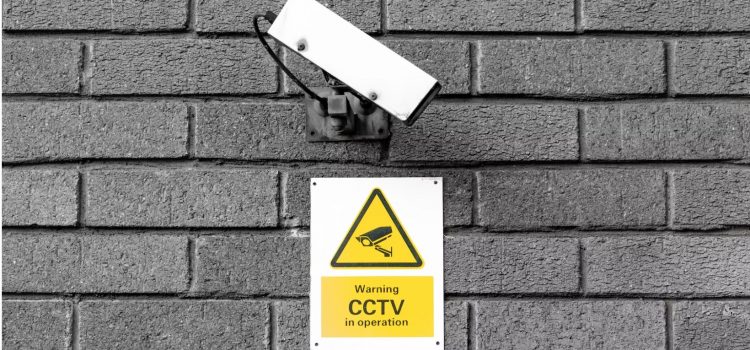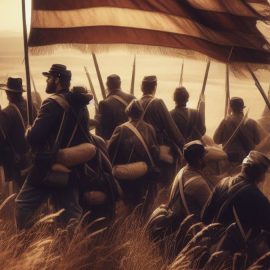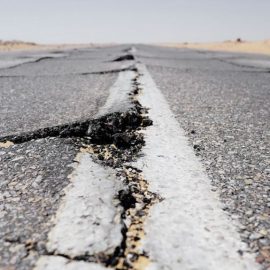
This is a free excerpt from one of Shortform’s Articles. We give you all the important information you need to know about current events and more.
Don't miss out on the whole story. Sign up for a free trial here .
What is mass surveillance and how did it begin? How has mass surveillance changed over the years?
Mass surveillance has become a daily part of life, as corporations and governments around the world openly collect data about who we are and how we live our lives. Increasingly more sophisticated methods have taken hold since the onset of mass surveillance over 80 years ago.
Keep reading to learn what mass surveillance is, how it works, and how it has evolved in society.
What Is Mass Surveillance?
Nowadays, governments and corporations around the world openly collect data on who we are and how we live our lives—but what is mass surveillance, exactly? To understand why (and how) mass surveillance has become commonplace, we have to look at its origins (indiscriminately watching and collecting data on everyone) and the histories of government agencies across the world that practice it.
In this article, we’ll show how over the past 80 years, intelligence agencies used technology, law, and brute force to go from wartime spying to running permanent and massive surveillance operations. We’ll mainly focus on domestic surveillance—a government watching its own people—and how trends in mass surveillance impacted countries across the world. Keep in mind that for this topic, less readily available information about an intelligence agency doesn’t necessarily mean less activity—many intelligence documents from the last 80 years remain classified.
Surveillance Post-World War II (1945-1969)
We’ll start by discussing mass surveillance and intelligence agencies in the years following the Second World War. While mass surveillance did exist before this—government officials in Victorian England regularly opened personal mail, for example—it was far less widespread and consistent. Tension ramped up quickly between the United States and Soviet Union following the end of World War II, and in response, many countries chose to continue using parts (or all) of their wartime spy agencies. During this period, most of these agencies operated as they had during the war—with absolute secrecy and no oversight from non-military portions of the government.
In this section, we’ll discuss the methods and political trends that defined mass surveillance in the decades following World War II.
Methods
Wiretapping/bugs: Wiretaps allow governments to listen in on phone calls and telegrams, while bugs are small recording devices used to monitor in-person conversations. Often, telephone companies or governments built telephone infrastructure that allowed for government surveillance.
Film cameras: The Stasi, or Eastern German secret police, in particular, used film “spy cameras” to secretly take still photos of citizens. However, cameras at the time were bulky and could only take a limited number of pictures.
Informant networks: Informants are either government employees or citizens who report “suspicious” behavior to the government. Informants often actively work to infiltrate organizations targeted by their governments.
Public opinion: Intelligence agencies also sought to monitor and control public opinion using polls, data collection, and propaganda. This meant anything from covertly (or explicitly) funding research to actively promoting disinformation.
Lists and information banks: Governments used large-scale file systems to collect and store information about citizens—their private lives, public lives, what was in their garbage, and so on. In particular, countries including the U.S. used information banks to collect data on suspected “dissidents.”
Cold War Escalation
In the years following World War II, the Cold War between the United States and the Soviet Union quickly escalated worldwide. In response, countries all over the world expanded their espionage and counter-espionage efforts—efforts that also included mass surveillance.
Examples
France: The Fourth French Republic’s intelligence agency SDECE used large-scale assassination campaigns along with torture to control dissent in France itself as well as in French colonies like Vietnam and Algeria.
East Germany: Throughout its existence, Soviet-backed Stasi secret police conducted enormous amounts of surveillance. Gigantic networks of wiretaps, informants, and disinformation campaigns allowed members of the Stasi to monitor and control East German citizens indiscriminately.
The Soviet Union: After the Second World War, the Soviet Union’s intelligence agencies (mainly the KGB) continued using their massive surveillance networks to monitor, imprison, and torture Soviet citizens. The Soviet Union (particularly under Joseph Stalin) in particular used vast networks of informants, encouraging citizens to watch and report each other in part by making it illegal to not report “treason and counterrevolutionary crimes.” After Stalin, subsequent Soviet leaders eased some of the KGB’s more repressive and brutal tactics.
The United States: Following World War II, American intelligence agencies like the FBI under J. Edgar Hoover and the CIA under Alan Dulles conducted mass surveillance operations. The FBI’s COINTELPRO used wiretaps, informants, misinformation campaigns, and assassinations to monitor, suppress, evict, fire, and murder American citizens deemed “suspicious” (particularly members of leftist groups, the civil rights and Black Panther movements, and labor unions). In addition to its extensive operations abroad, the CIA also allegedly infiltrated and influenced media organizations and student groups through Operation Mockingbird and other projects.
Decolonization
In the decades following the end of World War II, mass surveillance tactics also became common in colonies or newly independent nations across Africa and Asia—either as a way for colonizers to suppress dissent or for new post-colonial regimes to tighten their grip on power. In particular, the American CIA and Soviet KGB (and the agencies that preceded them) trained and outfitted other intelligence agencies across the globe.
Examples
India: India’s Intelligence Bureau was active in the years following India’s independence from Britain. In the following decades, the IB received training and support from the KGB. However, what the IB did or didn’t do is uncertain, since they have declassified almost no documents from this (or any other) period.
Iran: After a 1953 CIA coup installed Mohammad Reza Pahlavi as the Shah of Iran, he (with resources and training from the CIA and Israel’s intelligence agency Mossad) established the intelligence agency SAVAK. SAVAK infiltrated unions, newspapers, and student groups, using widespread brutality and surveillance to limit dissent and maintain the Shah’s power.
Iraq: Run by Saddam Hussein (before he became dictator), the Iraqi Intelligence Service (IIS) received training from the Egyptian SSIS in the 1960s. The KGB supported Saddam a few years later.
Israel: Intelligence agencies like the Israeli Security Agency (also known as Shin Bet) started as secret paramilitary groups in Israel, and the Israeli government adopted portions of them after gaining independence from the United Kingdom. Israeli intelligence agencies frequently cooperated with the CIA and operated with very little civilian government oversight. In addition, they commonly used (and still use) methods like torture and unlawful imprisonment.
South Africa: Established in the ’60s, The Bureau of State Security used violence and widespread surveillance to enforce the Afrikaaner white apartheid regime. Evidence suggests that the BSS was very likely connected to the CIA.
Surveillance in the Late Cold War (1970-1991)
The late Cold War saw drastic changes in the global political landscape as the result of the Soviet Union’s decline as well as the consequences of foreign intervention in post-colonial nations. Throughout these changes, many intelligence agencies went from tools for “fighting” the Cold War to more permanent fixtures of government.
Methods
Spy Satellites: Spy satellites orbit the Earth and can take photos from space and intercept phone calls, radio signals, and other forms of telecommunication. Initially developed for international Cold War spying in the 1950s, over time these satellites were used increasingly for domestic surveillance through programs like ECHELON.
Video surveillance: While it had existed previously, video surveillance (through security cameras, for example) became widespread with the development of the VCR in the ’70s—the new technology made recording and storing footage easier and more efficient.
Surveillance in the Internet Age (1991-Present)
With the collapse of the Soviet Union and the end of the Cold War, many intelligence agencies lost their original justifications for the use of mass surveillance. However, they soon found new justifications for its expanded use—and new technologies to conduct surveillance on a larger scale than ever before.
Methods
Video surveillance: Modern security cameras create a higher-quality image and can store far more footage. Governments often use traffic cameras and can take footage from security cameras of private businesses.
GPS Tracking: Improvements in satellite technology and the prevalence of smartphones allow governments to track people’s locations and movements.
Internet activity: Governments can survey people’s internet activity—the messages they send, the websites they visit, and the applications or programs they use. Algorithms and artificial intelligence: Governments can use computer algorithms and artificial intelligence to detect patterns of behavior, learn about people, and even predict what they’ll do next. These programs can analyze things like biometric data (faces, voices, gait, fingerprints, DNA) and online posts and pictures.

Want to fast-track your learning? With Shortform, you’ll gain insights you won't find anywhere else .
Here's what you’ll get when you sign up for Shortform :
- Complicated ideas explained in simple and concise ways
- Smart analysis that connects what you’re reading to other key concepts
- Writing with zero fluff because we know how important your time is






